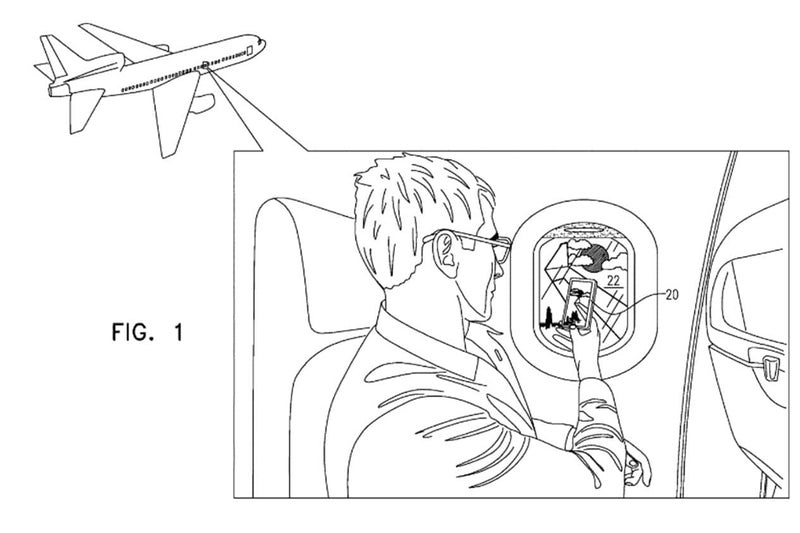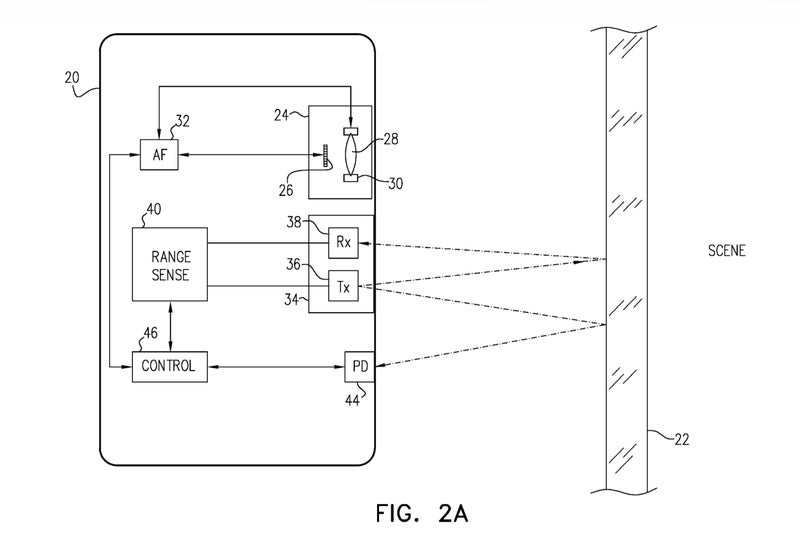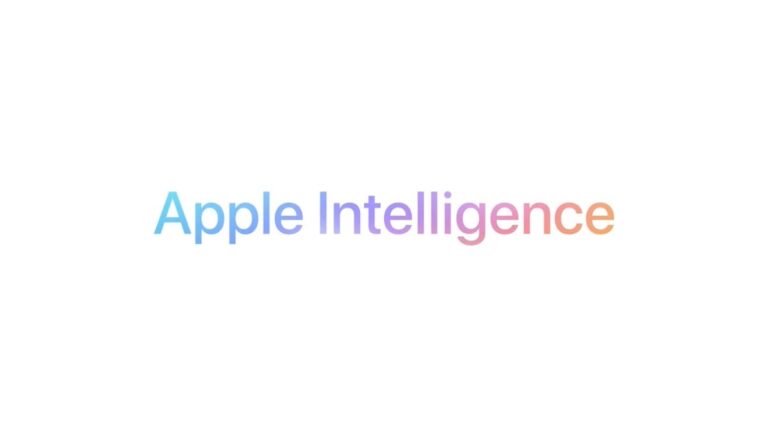The patent, labeled US 12335613 B2, explains how this twin-laser system would function. When you raise your phone to take a picture, each laser fires a pulse of light at a slightly different angle. Tiny sensors measure how long it takes for those reflections to return. If both beams agree on the distance, the iPhone locks focus immediately. If not, the system waits and switches to the traditional autofocus method before trying again.

Figure in Apple’s laser-based autofocus filing. | Image credit — USPTO
This isn’t the first time laser-based autofocus has appeared on smartphones. LG introduced it with the LG G3 back in 2014 to improve focus speed in low light. ASUS also included laser modules in its Zenfone lineup, while Huawei and OnePlus used them as part of hybrid systems combining laser, phase detection, and contrast-based methods.
Google’s earlier Pixel models also featured laser autofocus, though it later shifted toward dual pixel and computational approaches. However, all these systems used a single laser beam, which could be fooled by reflective surfaces like glass or metal.
However, Apple’s proposed system stands out by using two lasers at different angles to verify distance more accurately. If the two signals disagree, the phone falls back on more traditional focus methods before retrying — something no existing phone camera does.

Figure in Apple’s laser-based autofocus filing. | Image credit — USPTO
This new approach could help reduce blurry photos in many common situations — like snapping a picture of your pet running in the yard or capturing a landscape from inside a moving car or plane. The lasers offer more precise depth judgment, especially when dealing with reflective surfaces like water, metal, or glass.
What are the potential advantages of the twin-laser setup?
In Apple’s filing, a few potential advantages are highlighted:
- Faster photos: The lens won’t need to hunt back and forth to find focus, so you’re less likely to miss fleeting moments.
- Improved accuracy: The system can detect and avoid false reflections, resulting in clearer images through windows, fences, or in low light.
- Better efficiency: Less focus searching means lower power usage, which could slightly extend battery life over time.
If this feature does ship, Apple could brand it with terms like “instant laser focus” or “dual-beam depth lock.” But I think that for users, the benefit will be simple: more dependable sharpness in everyday photos, especially when time and movement are working against you.
Grab Surfshark VPN now at more than 50% off and with 3 extra months for free!
We may earn a commission if you make a purchase
Check Out The Offer
Read the latest from Johanna Romero
















